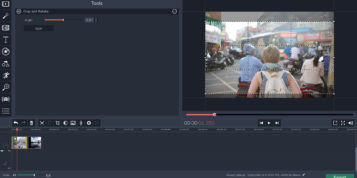What does ‘view’ mean? Sounds like a simple question, but if you’re a media buyer looking at the multiplicity of different emerging online advertising formats, particularly within the video space, getting to the bottom of this presents a massive challenge.
The fact is, one media owner’s interpretation of ‘View’ can be completely different to another’s, highlighted by the emergence and growth of “Completed Views”.
But even here you have a range of definitions. Some platforms charge advertisers for videos when only 75% of the content has been watched – does that really justify using the word “completed”? After all, you wouldn’t call a crossword complete if you’ve left 25% of the answers blank, would you?
The root of the problem is the lack of industry standardisation in measurement when it comes to the latest online advertising formats, in particular video-related ones.
The constant development of new technologies and online tools drives innovation and the introduction of new ad formats, which means more pricing options and more complexity for media buyers and brand marketers. Arguably, what they really need is standardised metrics that allow them consistency in working out what they are getting for their money from different sites and types of ads or content, so they can plan their campaigns properly.
If there are no metrics that allow for like-for-like comparisons of the latest online video advertising formats, then it’s only to be expected that the more unsophisticated media buyers and marketers will fall back on what they see as tried and trusted measures of effectiveness – which may no longer be relevant to the latest media formats.
There are plenty of marketers and media buyers out there who are still programmed into asking for page views, CPM and Cost per Click, even though measures like this were arguably outdated when they were first adopted, reflecting as they did a wholesale carrying over of old media newspaper and TV thinking to digital marketing.
The reason for that is simple: TV, radio, outdoor, magazine and newspaper publishers always faced the challenge of calculating how many people did something as a result of seeing an ad. Suddenly, they thought in digital they had the Holy Grail – a way to measure effectiveness.
I recall working at Haymarket Publishing when we first introduced banners and even (ready to feel antiquated?) online buttons. For advertisers, the number of clicks they got for the money they were spending immediately became the defining metric, irrespective of the true value of the customers they were reaching.
Really, that’s like measuring the success of a shop by counting how many people walk through the door rather than how much they spend and what the margin is on those sales.
Media owners have been trying to address criticisms of ‘old style’ media metrics, which focus on measures like Pay Per Click and Cost Per Acquisition, by moving to measures like Cost Per Engagement. But then marketers needed a definition of what ‘engagement’ was – which became even more important when online video advertising took off.
Differing interpretations of what constitutes engagement have fuelled the development of measures like Cost Per Viewed Video and now Cost Per Completed Video. As I’ve said, though, there are already disagreements about what these terms should mean.
Secondly, media owners, understandably, want to select measures that will help them present their advertising formats and their sites in the best way possible. So we all look for measures that play to our strengths.
What we need, though, is for industry bodies like the Internet Advertising Bureau, to start developing some standard metrics when it comes to the accountability of online video advertising.
That isn’t going to be an easy job. To begin with, I would argue that they first need to develop some standardised formats for video ads before they can tackle measuring their effectiveness. These formats should include length: after all, is there any value of a measure that assigns the same weighting to a viewer watching the whole of a two minute video as it does to someone watching the whole of a 10 second video?
Then they have to look at other variables – does the video run automatically, or does the user have to take some action to start it? Does it run with or without sound? Does a viewer expanding the screen indicate a greater level of engagement? Has anyone enjoyed it enough to watch it twice? And not forgetting, of course, the question of what happens next – how many people click through to the advertiser’s site? What do they do there? Do they actually buy something?
Online advertising, particularly online video, is rapidly maturing as a media channel but if it is to really be a viable communications platform for brand advertisers to create meaningful relationships with their target audiences then it needs commonly agreed metrics and a universal language so that everyone (brand marketers, media buyers and publishers themselves) knows just what a ‘completed view’ means. Only then will we truly be able to measure success.






